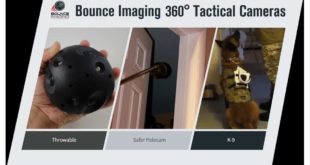Modelling is the process of representing a model (e.g., physical, mathematical, or logical representation of a system, entity, phenomenon, or process) which includes its construction and working. This model is similar to a real system, which helps the analyst predict the effect of changes to the system. Simulation of a …
Read More »Russia developing range of large, small, and mid-sized stealthy drones, closing the gap with US, Israel and China
The US and Israel are universally recognized leaders in the development and use of unmanned aerial vehicles (UAVs) or drones. Thousands of American and Israeli UAVs are operating across the world daily. China is already world’s largest producer of UAVs and is working on taking on a greater share in …
Read More »ROVs for efficient underwater inspection
Ocean shipping continues to be the primary transportation method of billions of dollars in goods. As such a massive industry, safety is incredibly important. Underwater inspection of shipping vessels is important for many reasons. It saves money and time by understanding what is happening under your vessel without diver intervention. …
Read More »Enabling technologies of In-Space Assembly (OOS / ISA), automated satellite on-orbit servicing (OOS) and Robotic Manufacturing and Assembly (IRMA)
In the history of spaceflight, almost all spacecraft have been manufactured and assembled on the ground, then integrated into a launch vehicle for delivery into orbit. This approach imposes significant limitations on the size, volume, and design of payloads that can be accommodated within the fairing of a single launch …
Read More »Unmanned Ground Combat robots or UGVs technology requirements an trends
An unmanned ground vehicle (UGV) is a vehicle that operates while in contact with the ground and without an onboard human presence. hey are the land counterparts of marine and aerial unmanned vehicles. All of these vehicles play integral roles in enhancing performance, efficiency, and safety across various applications, including …
Read More »Security forces require throwable robots that can send video of inside buildings
Cities have become the new battleground and Hybrid or Urban Warfare the greatest threat being waged by ISIS to Boko Haram to Hamas to Ukraine rebels. The terrorists resort to Asymmetric Warfare exploiting the limitations and vulnerabilities of high-tech weapons and platforms, with relatively simple, low-cost countermeasures, tactics, and solutions. …
Read More »Bio-Inspired Micro Air Vehicle for better flight performance, controlability and endurance
UAVs are Aircrafts that are piloted remotely by some person who is at a different place. These UAVs of various sizes and shapes can fly continuously for more than 24 hours and some of them can only fly for less than 30 minutes. Some UAVs have wings of several meters …
Read More »DARPA MFP developed drone swarm interceptor system to protect convoys moving through populated regions
“The rapid evolution of small unmanned air systems (sUAS) technologies is fueling the exponential growth of the commercial drone sector, creating new asymmetric threats for warfighters. sUASs’ size and low cost enable novel concepts of employment that present challenges to current defense systems. These emerging irregular systems and concepts of …
Read More »DARPA SQUIRREL exploiting robots relays for military communication in caves or jungles with heavy foliage
Mobile robots used by the military and law enforcement agencies require a robust communications link for successful mission executions. Such mobile robots are increasingly used in life-threatening situations and hazardous environments, rendering a solid communications link to be of vital importance. Tactical mobile robots used in military and law enforcement operations …
Read More »Autonomous and Unmanned Ground Vehicle (UGV) for Security
National security has been described as the ability of a state to cater to the protection and defence of its citizenry. It includes Human security which means freedom from pervasive threats to people’s rights, safety, and lives. Homeland security means protecting the nation against terrorism, natural or man-made disasters, as …
Read More » International Defense Security & Technology Your trusted Source for News, Research and Analysis
International Defense Security & Technology Your trusted Source for News, Research and Analysis






